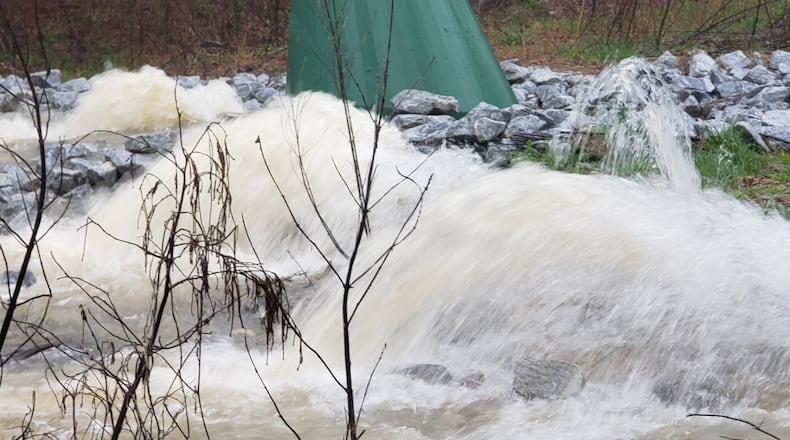Last week’s heavy rains brought yet another massive sewer spill to a frequent problem site in DeKalb County.
More than 2.5 million gallons of sewage spilled near Meadow Creek Path in Lithonia on Aug. 17, county officials said. At least 28.5 million gallons have now gushed out of the same site since the start of 2020, creating public health and ecological dangers by dumping bacteria like E. coli into the nearby South River.
County officials said they have “completed various projects to reduce spills” at the location, which isn’t far from the Snapfinger Creek Wastewater Treatment Plant. Those projects reportedly include replacing a sewer line that crosses the creek and rehabbing 48,000 feet of pipe further upstream to try and reduce stormwater entering the system — but the spills have continued.
Stormwater intrusion is a particular problem in DeKalb. During heavy storms, rainwater enters sewer pipes through cracks and other imperfections, overwhelming the system and forcing sewage back out.
The spill on Meadow Creek Path was just one of 13 reported as the remnants of Tropical Storm Fred swept through DeKalb and the rest of metro Atlanta last week.
The non-Meadow Creek Path spills accounted for a total of about 300,000 gallons of sewage, according to county officials.
DeKalb has been under a federal consent decree to fix its aging sewer system and come into compliance with the federal Clean Water Act since 2011. While CEO Michael Thurmond has made the repairs a priority since taking office in 2017, the county was nowhere near completion when the original consent decree expired last summer.
A U.S. District Court judge is currently considering a modified agreement that would give DeKalb until Dec. 20, 2027, to complete large-scale repairs in priority areas. The county would also need to address a total of 103 repeat spill sites within the first four years of the new agreement (with at least half of them fixed in the first two years).
The new agreement would also involve a $1.05 million fine and require the county to file more extensive and frequent progress reports.
About the Author
Keep Reading
The Latest
Featured

